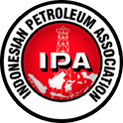Publications
Unpiggable Pipelines Integrity Assessment by Internal Corrosion Modelling bnd Prediction Based on Topside Piping Inspection Data in The Mature Field Offshore North West Java
Proceedings Title : PROCEEDINGS, INDONESIAN PETROLEUM ASSOCIATION, Forty-Fifth Annual Convention & Exhibition, 1 - 3 September 2021
Pertamina Hulu Energi - Offshore North West Java, also known as PHE ONWJ, owns 426 subsea pipelines from which only 185 are active operating to support the PHE ONWJ’s production activity and the remaining 241 pipelines are inactive which their status is either remain idle or being preserved. Noted that 67% or 284 of the pipelines aged more than its design life. Onehundred twenty pipelines are still actively operating distributing fluids such as Oil, Gas and 3-phase. Based on the observation, more than 90% of leak events occurred by internal corrosion, that causedby the corrosive agents such high CO2 content, sands or solid particles, SRB and water.
The existing integrity management plan such as in-line inspection, fluid sampling, chemical injection and others were performed onto several pipelines. However, PHE ONWJ’s pipeline network facility on Figure 1-2 that is complex and massive, for that reason is not economically to perform in-line inspection to all pipelines. Considering to the conditions mentioned, an effective and efficient pipeline integrity management is developed based on corrosion rate prediction from topside piping within pipeline corrosion circuit as per API 571.
This model is constructed from the combination of several parameters like fluid sampling, In-Line Inspection of several pipelines with different services, Topside piping inspection data, Operating history and Design data. The internal corrosion model is developed continuously to validate and used to assess data obtained from In-Line Inspection (ILI) that performed into several pipelines. Since the model is developed, the accuracy ranging 80-99% is achieved. The model is used to predict the maximum internal corrosion rate of PHE ONWJ’s pipeline and become a basis in determining pipeline’s integrity status, remaining life and assisted in assessing the pipeline risk. Those outcome are then become an action plan.
Therefore, a joint study is made to create such corrosion model for pipelines. The goal is to have an in-depth approach in managing matured and unpigable pipeline integrity that can be effectively operated gobally and to ensure all stakeholders that it is safe to operate the pipeline.
Log In as an IPA Member to Download Publication for Free.
